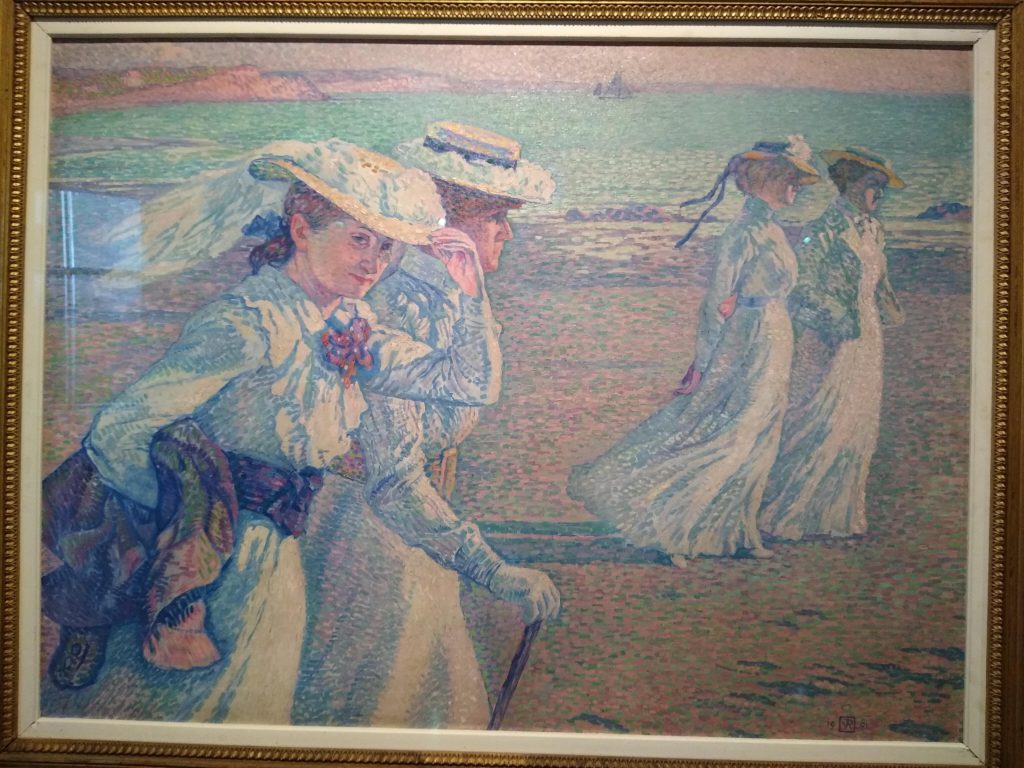We spent an afternoon in Brussels ten years ago as part of our five countries in ten days extravaganza. This time we gave it four days so we saw much more than just the Grand Place, although it certainly is grand!
Brussels is a city of neighborhoods. The Grand Place and surrounding streets are at the center and represent just one. For more on the Grand Place go to my post on iconic Brussels http://europeyourway.net/brussels. We explored a number of areas and enjoyed them all.
Les Marolles
This was our ‘home’ during our stay in Brussels. Our AirBnB was midway between the Central Station (where we arrived on the train from Bruges) and the Midi, or South Station, (where we would catch the high-speed train to Paris). We were about a ten minute walk to the Grand Place which you can easily find from anywhere in the city so our home base worked out really well for us.
It’s a quirky, up-and-coming neighborhood with lots of fun murals and art installations.
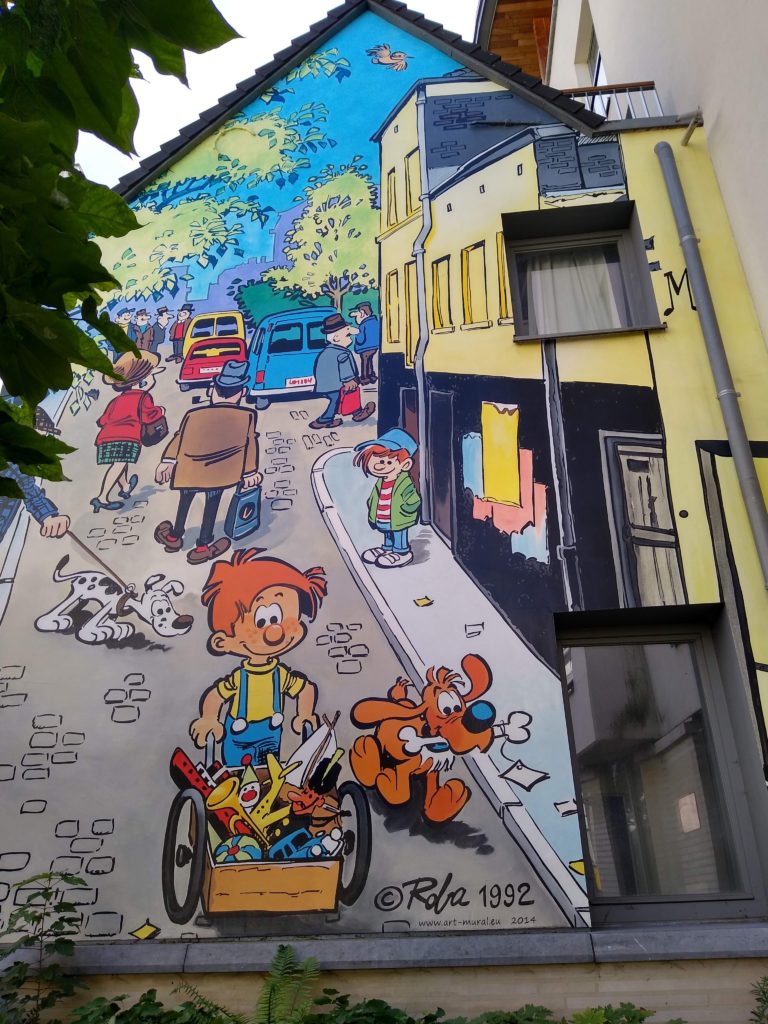
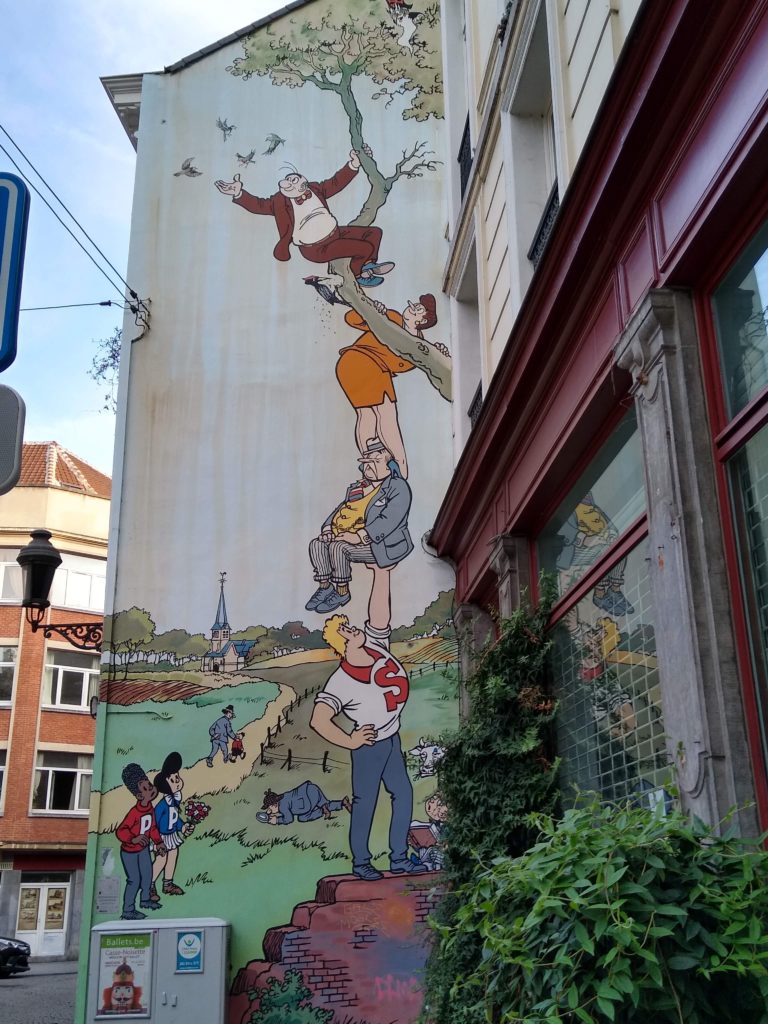

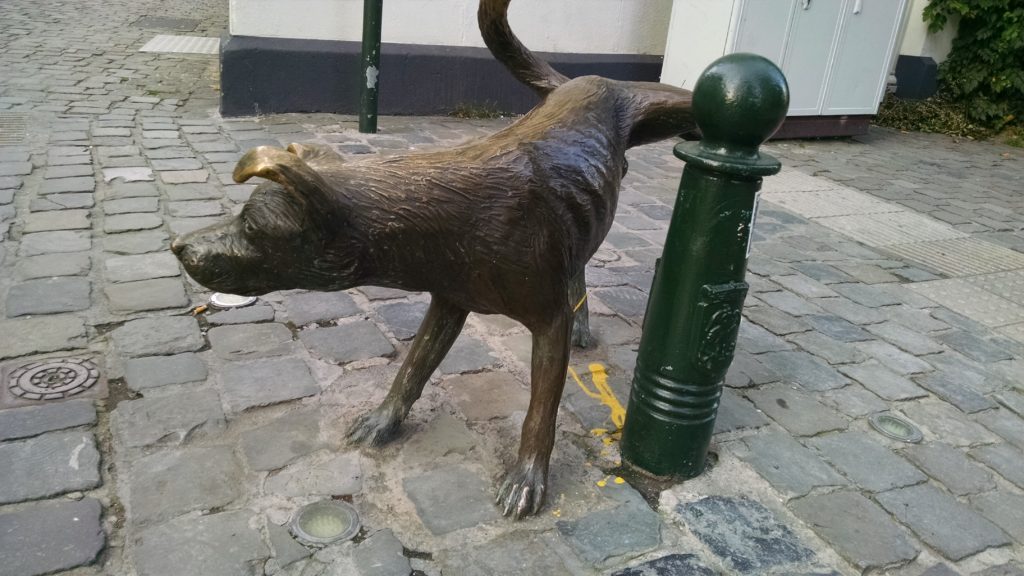
Bronze Dog
The other thing we really liked about this neighborhood is that we were close to one of the best street markets in the city at Place du Jeu de Balle. The only day we were up and out before 10:00 was on Saturday for this market. It was insane! While some vendors had tables and a very few had canopies, many just displayed their wares out on a rug on the ground. We spent about three hours there and did manage to find a few treasures. What fun!

Jeu de Balle Street Market 
The Band Provides Some Background Music
Sainte Catherine and St. Gery
These two adjoining neighborhoods are also about ten to fifteen minutes from the Grand Place but in a different direction from our home neighborhood.
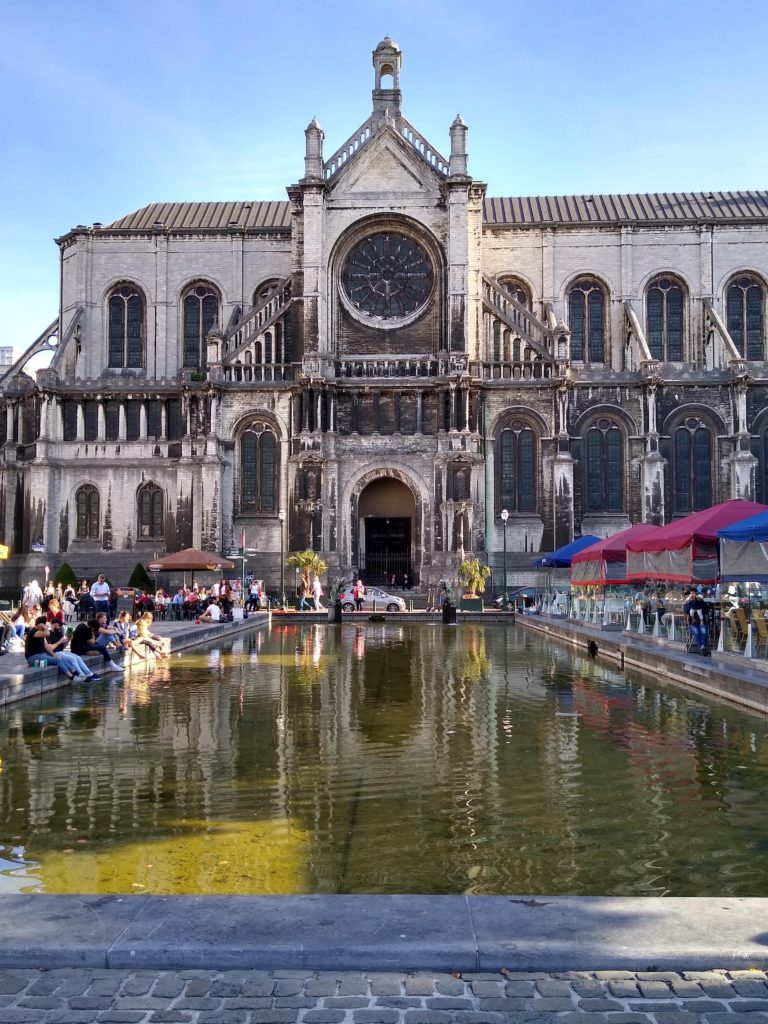
Sainte Catherine is anchored by Sainte Catherine Church, a relic in a sorry state of disrepair. The church sits at one end of what once was the main canal that got Brussels started as a trading hub. That canal has largely been covered over and all that remains is this section about the size of a large swimming pool. Around this ‘canal’ are a number of pricey seafood restaurants but on the other side of the church you can find less expensive dining options.
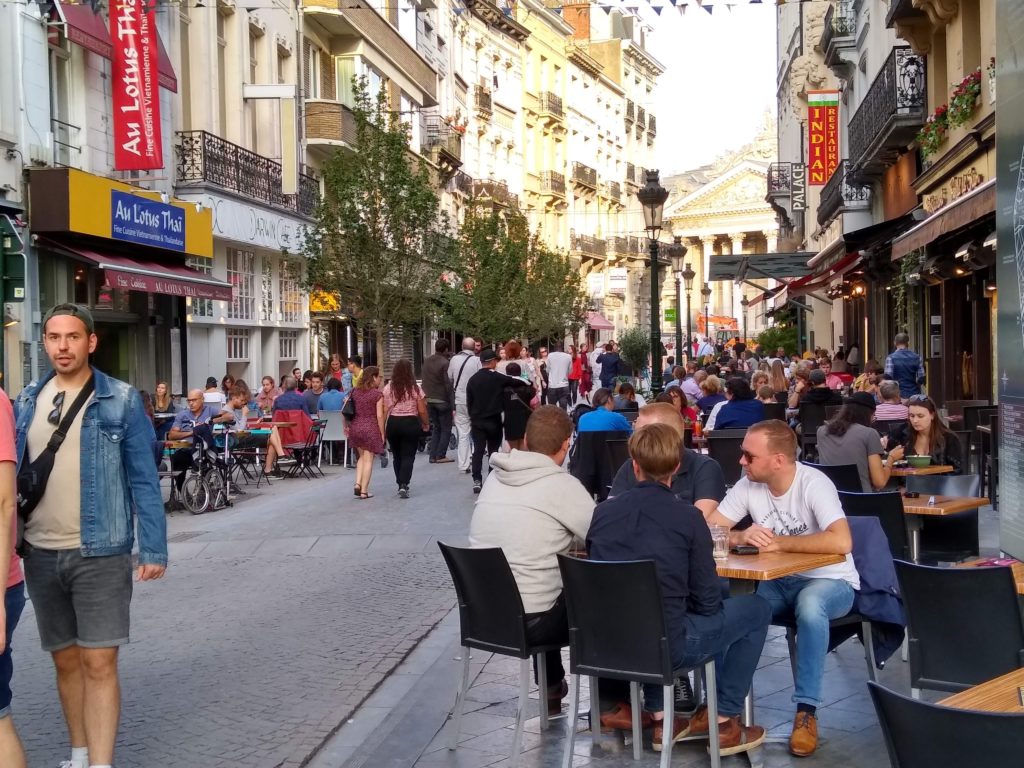
The St. Gery neighborhood is livelier and is where we found all the sports bars (and an Irish pub). The day we explored Sainte Catherine we returned through St. Gery and had a drink at O’Reilly’s where we watched the extremely odd game of Gaelic football. As best we could tell it’s kind of a cross between hurling (another odd Irish sport) and soccer. Sunday night we returned to this neighborhood to a place called The Big Game to watch the Minnesota Vikings play the Green Bay Packers and ended up hanging out with a young Wisconsin couple (who were, of course, Packer fans). Vikings lost, oh well.
Upper Town
Brussels is divided between the Upper Town and the Lower Town. The Grand Place and the neighborhoods described above are all in the lower town. The upper town is where you find the Royal Palace, the Royal Museums of Fine Arts and European Parliament.

For us, to get from the lower town to the upper town required a quarter mile or so uphill walk through the Sablon neighborhood. We went to the upper town twice.
On Sunday, we went to the Royal Museums of Fine Arts (they are closed on Mondays). As we strolled up the hill through Sablon, we stumbled upon an interior design fair. Tents with everything from furniture and lamps to fine art. We didn’t linger because we didn’t have time but it was interesting to run through. On Monday, we visited European Parliament which is described in my post http://europeyourway.net/brussels.
Royal Museum of Fine Arts (Musee Royaux des Beaux-Arts)
This museum is really three museums in one. You can pay to visit just one or for a few euros more, get a pass to all three. There is an extra fee for the audio guide so we rented just one and shared it, which worked our pretty well for us.
The first, and most impressive, of the three is the Gallery of Old Masters. This was the Groenigen (in Bruges) on steroids. We started with the terriffic cinematic experience on Peter Brueghel. Then, the galleries take you from the Flemish Primitives and their amazing level of detail through the masters of the golden age (1600s). They had an incredible room almost totally dedicated to Rubens religious works which were on an epic scale.
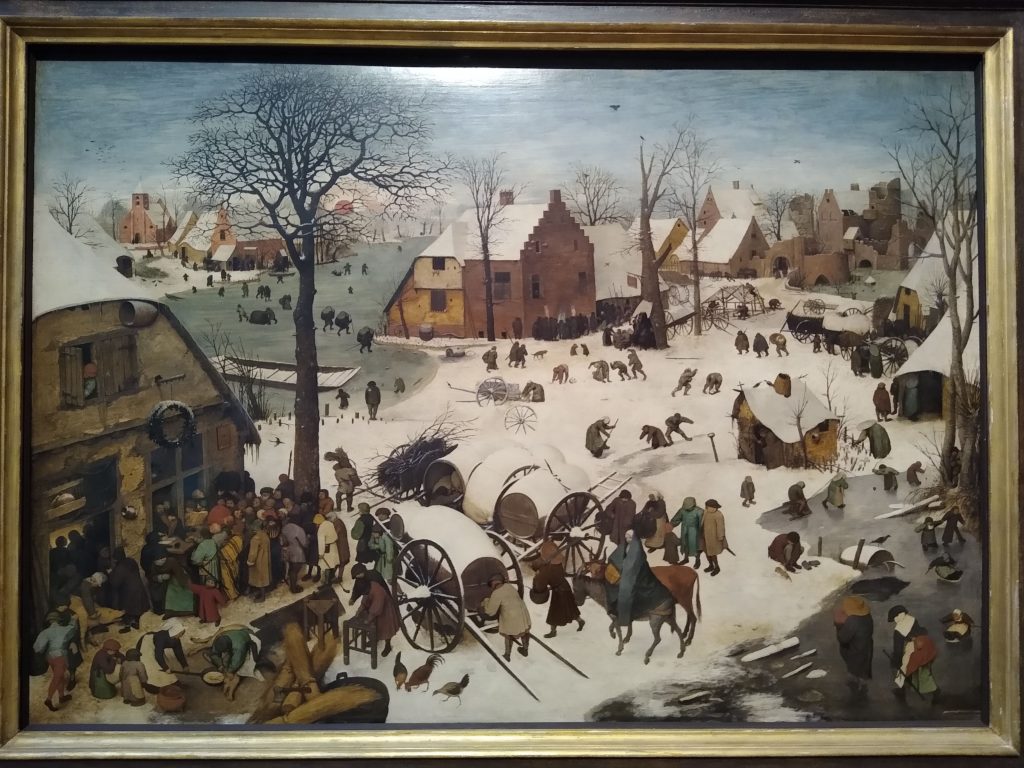
Peter Brueghel I 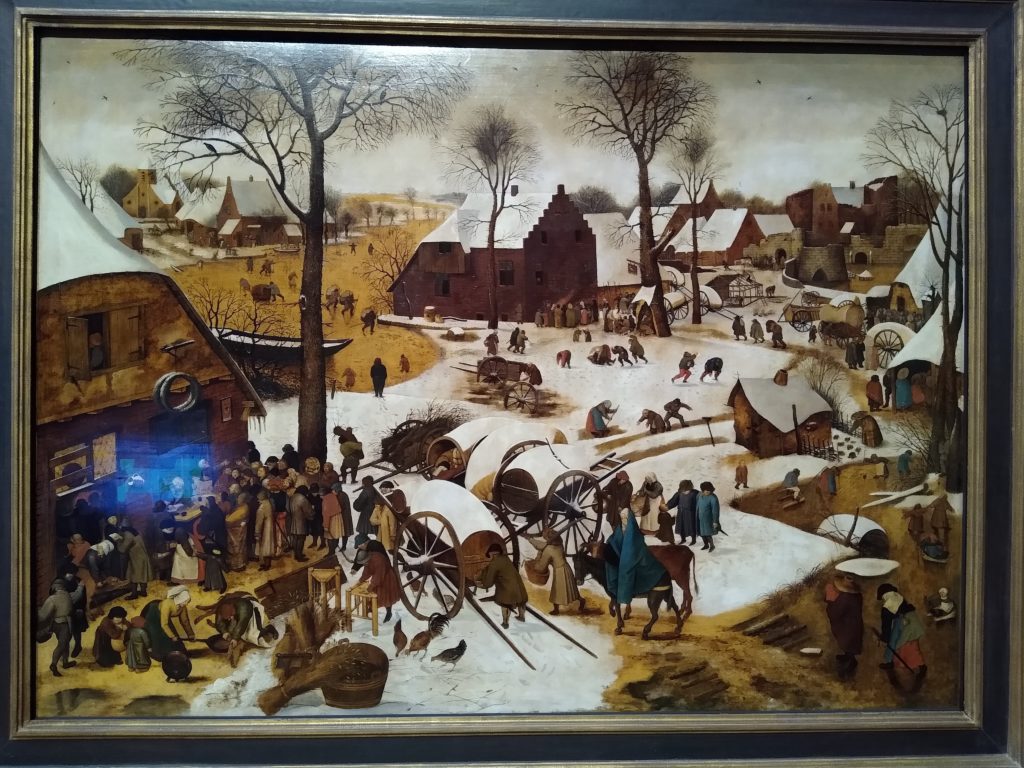
Peter Brueghel II
The second, and the one I really looked forward to, was the Fin-de-Siecle which took you from the realism of the 1800s through post-impressionism. There weren’t many famous works here but they did have a Seurat (pointillism), a Gaugin, and a Vuillard. Since I really like impressionism, I enjoyed this museum quite a bit.
The third is dedicated to their hometown hero, Rene Magritte. Again, not many of his famous works are here but they provide an in-depth look at his story, process, and technique. So, even though this isn’t necessarily our cup of tea, it was an interesting walk through.

Early Magritte 
Later Magritte
